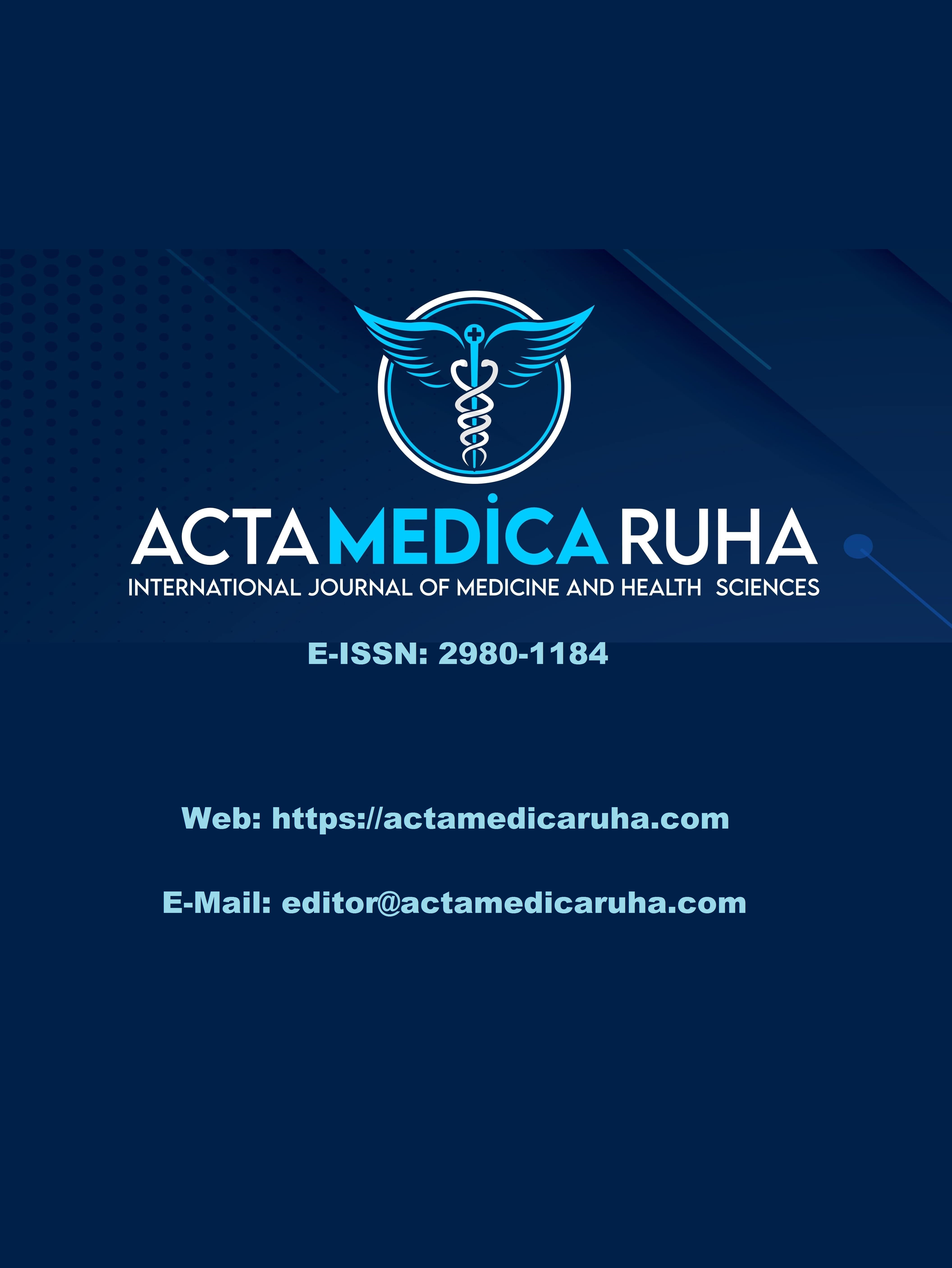English Vitamin D Status in Turkey
Research Article
DOI:
https://doi.org/10.5281/zenodo.10049820Keywords:
vitamin D, vitamin deficiency, TurkeyAbstract
Background/ Aim: Vitamin D deficiency is highly prevalent condition. The aim of the present study was to assess vitamin D status in people living in Turkey.
Methods: This was a single center, retrospective study on subjects who attended to Acibadem Hospitals and outpatient clinics for the measurement of 25(OH)D. Data on 25(OH)D was available for 179464 subjects.
Results: Mean 25(OH)D was 19, 56 ±0,04 ng/mL and mean age of the subjects was 39, 28 ± 0, 05 years. Mean 25(OH)D of women were lower than men; (18, 79 ± 0, 05 vs 22, 07 ± 0, 09 ng/mL; p<0.001). 25(OH)D of 111510 subjects (62, 1%) was <20 ng/mL. 42592 (23, 7%) were between 20-32 ng/mL. 24276 (13, 5%) of the subjects demonstrated normal 25(OH)D levels. 25(OH)D level was excess in 776 (0, 4%) of the subjects. Three hundred and ten (0, 2%) had toxic 25(OH)D levels. Totally 85, 9% of the subjects had low 25(OH)D levels. Adolescents, adults and elderly had lower 25(OH)D levels than newborns and children (p<0.001). Vitamin D deficiency and insufficiency were more common in adolescents, adults and elderly than in new born and children (p<0.001).
Conclusıons: A considerable number of subjects in our study had 25(OH)D below the normal ranges for all age groups except neonates, demonstrating that vitamin D deficiency and insufficiency in western part of the country is a major healthcare concern in Turkey.
References
DeLuca, H. Overview of General physiological tenures and function of vitamin D. Am J Clin Nutr. 2004; 80: 16895–965.
Holick MF, Chen TC. Vitamin D deficiency: a worldwide problem with health consequences. Am J Clin Nutr. 2008; 87 (suppl): 1080S-6S.
N. A. Dennis, L. A. Houghton, G. T. Jones, et al. The level of serum antimullerian hormone correlates with vitamin d status in men and women but not in boys. J Clin Endocrinol Metab. 2012; 97: 2450–5.
Bouillon R, Carmeliet G, Verlinden L, et al. Vitamin D and human health: lessons from vitamin D receptor null mice. Endocr Rev. 2008; 29: 726-76.
Ferder M, Inserra F, Manucha W, Ferder L. The world pandemic of vitamin D deficiency could possibly be explained by cellular inflammatory response activity induced by the renin-angiotensin system. Am J Physiol Cell Physiol. 2013; 304: 1027-39.
Holick MF. Vitamin D deficiency. N Engl J Med. 2007; 357: 266-81.
Heaney, RP, Dowell MS, Hale CA, Bendich A. Calcium absorption varies within the reference range for serum 25-hydroxyvitamin D. J Am Coll Nutr. 2003; 22: 142–6.
Bischoff-Ferrari HA, Dietrich, T. Orav EJ, et al. Higher 25 hydroxy-vitamin D concentration are associated with better lower-extremity function in both active and inactive persons aged > 60 yrs. Am J Clin Nutr. 2004; 80: 752–8.
Cannell JJ, Hollis BW, Zasloff M, Heaney RP. Diagnosis and treatment of vitamin D deficiency. Expert Opin Pharmacother. 2008; 9; 107–18.
Lips P. Vitamin D deficiency of secondary hyperparathyroidism in the elderly: Consequences for bone loss and fractures and therapeutic implications. Endocr Rev. 2001; 22: 477–501.
Chapuy MC, Preziosi P, Maamer M, et al. Prevalence of vitamin D insufficiency in an adult normal population. Osteopros Int. 1997; 7: 439–43.
Holick MF, Siris ES, Binkley N, et al. Prevalence of vitamin D inadequacy among postmenopausal North American women receiving osteoporosis therapy. J Clin Endocrinol Metab. 2005; 90: 3215–24.
Heaney PR. Functional indices of vitamin D status and ramifications of vitamin D deficiency. Am J Clin Nutr. 2004; 80: 1706– 9.
Hanley DA, Davison KS. Vitamin D insufficiency in North America. J Nutr. 2005; 135: 332–7.
Hollis BW, Wagner CL. Assessment of dietary vitamin D requirements during pregnancy and lactation. Am J Clin Nutr. 2004; 79: 717–26.
van der Meer M, Middelkoop BJC, Boeke AJP, Lips P. Prevalence of vitamin D deficiency among Turkish, Moroccan, Indian and Sub-Sahara African populations in Europe and their countries of origin: an overview. Osteoporosis Int. 2011; 22: 1009-21.
Hekimsoy Z, Dinc G, Kafesciler S, et al. Vitamin D status among adults in the Aegian region of Turkey. BMC Public Health. 2010; 10: 782.
Meyer HE, Falch JA, Sogaard AJ, Haug E. Vitamin D deficiency and secondary hyperparathyroidism and the association with bone mineral density in persons with Pakistani and Norwegian background living in Oslo, Norway, The Oslo Health Study. Bone. 2004 35; 412–7.
Melhus H, Snellman G, Gedeborg R, et al. Plasma 25-hydroxyvitamin D levels and fracture risk in a community-based cohort of elderly men in Sweden. J Clin Endocrinol Metab. 2010; 95: 2637–45.
Kauppi M, Impivaara O, Maki J, et al. Vitamin D status and common risk factors for bone fragility as determinants of quantitative ultrasound variables in a nationally representative population sample. Bone. 2009; 45: 119–24.
Pekkarinen T, Turpeinen U, Hämäläinen E, et al. Serum 25(OH)D3 vitamin status of elderly Finnish women is suboptimal even after summer sunshine but is not associated with bone density or turnover. Eur J Endocrinol. 2010; 162: 183–9.
Khaw KT, Sneyd MJ, Compston J. Bone density parathyroid hormone and 25-hydroxyvitamin D concentrations in middle aged women. BMJ. 1992; 305: 273–7.
Andersen R, Molgaard C, Skovgaard LT, Brot C, et al. Teenage girls and elderly women living in northern Europe have low winter vitamin D status. Eur J Clin Nutr. 2005; 59: 533–41.
van Schoor NM, Visser M, Pluijm SM, et al. Vitamin D deficiency as a risk factor for osteoporotic fractures. Bone. 2008; 42: 260–6.
Boonen S, Vanderschueren D, Cheng XG, et al. Age-related (type II) femoral neck osteoporosis in men: biochemical evidence for both hypovitaminosis D- and androgen deficiency-induced bone resorption. J Bone Miner Res. 1997; 12: 2119–26.
Woitge HW, Scheidt-Nave C, Kissling C, et al. Seasonal variation of biochemical indexes of bone turnover: results of a population-based study. J Clin Endocrinol Metab. 1998; 83: 68–75.
Chapuy MC, Preziosi P, Maamer M, et al. Prevalence of vitamin D insufficiency in an adult normal population. Osteoporos Int. 1997; 7: 439–43.
Burnand B, Sloutskis D, Gianoli F, et al. Serum 25-hydroxyvitamin D: distribution and determinants in the Swiss population. Am J Clin Nutr. 1992; 56: 537–42.
Quesada JM, Jans I, Benito P, Jimenez JA, Bouillon R. Vitamin D status of elderly people in Spain. Age Ageing. 1989; 18: 392–397.
Bettica P, Bevilacqua M, Vago T, Norbiato G. High prevalence of hypovitaminosis D among free-living postmenopausal women referred to an osteoporosis outpatient clinic in northern Italy for initial screening. Osteoporos Int. 1999; 9: 226–9.
Challa A, Ntourntoufi A, Cholevas V, et al. Breastfeeding and vitamin D status in Greece during the first 6 months of life. Eur J Pediatr. 2005; 164: 724–9.
Laktasic-Zerjavic N, Korsic M, Crncevic-Orlic Z, et al. Vitamin D status, dependence on age, and seasonal variations in the concentration of vitamin D in Croatian postmenopausal women initially screened for osteoporosis. Clin Rheumatol. 2010; 29: 861–7.
Kuchuk NO, van Schoor NM, Pluijm SM, Chines A, Lips P. Vitamin D status, parathyroid function, bone turnover, and BMD in postmenopausal women with osteoporosis: global perspective. J Bone Miner Res. 2009; 24: 693–701.
Lips P, Duong T, Oleksik A, et al. A global study of vitamin D status and parathyroid function in postmenopausal women with osteoporosis: baseline data from the multiple outcomes of raloxifene evaluation clinical trial. J Clin Endocrinol Metab. 2001; 86: 1212–21.
van der Wielen RP, Lowik MR, van den Berg H, et al. Serum vitamin D concentrations among elderly people in Europe. Lancet. 1995; 346: 207–10.
Alagol F, Shihadeh Y, Boztepe H, et al. Sunlight exposure and vitamin D deficiency in Turkish women. J Endocrinol Invest. 2000; 23: 173–7.
Atli T, Gullu S, Uysal AR, Erdogan G. The prevalence of Vitamin D deficiency and effects of ultraviolet light on Vitamin D levels in elderly Turkish population. Arch Gerontol Geriatr. 2005; 40: 53–60.
Gannage-Yared MH, Chemali R, Yaacoub N, Halaby G. Hypovitaminosis D in a sunny country: relation to lifestyle and bone markers. J Bone Miner Res. 2000; 15: 1856–62.
Mishal AA. Effects of different dress styles on vitamin D levels in healthy young Jordanian women. Osteopor Int. 2001; 12: 931–935.
Andiran N, Yordam N, Ozon A. Risk factors for vitamin D deficiency in breast fed new borns and their mothers. Nutrition. 2002; 18: 47-50.
Ergul AT, Berberoglu M, Atasay B, et al. Vitamin D deficiency in Turkish mothers and their neonates and in women of reproductive age. J Clin Res Ped Endo. 2009; 1: 266-9.
Cizmecioglu EM, Etiler N, Gormus U, Hamzaoglu O, Hatun S. Hypovitaminosis D in obese and overweight schoolchildren. J Clin Res Pediatr Endocrinol. 2008; 1: 89-96.
Hatun S, Ozkan B, Bereket A. Vitamin D deficiency and prevention: Turkish experience. Acta Paediatr. 2011; 100: 1195-9.
Smotkin-Tangorra M, Purushothaman R, Gupta A, et al. Prevalence of vitamin D insufficiency in obese children and adolescents. J Pediatr Endocrinol Metab. 2007; 20: 817-23.
Creo AL, Rosen AJ, Ariza AJ, Hidaka KM, Binns HJ. Vitamin D levels, insulin resistance, and cardiovascular risks in very young obese children. J Pediatr Endocrinol Metab. 2013; 26: 97-104.
Downloads
Published
How to Cite
Issue
Section
License
Copyright (c) 2023 Acta Medica Ruha

This work is licensed under a Creative Commons Attribution 4.0 International License.









